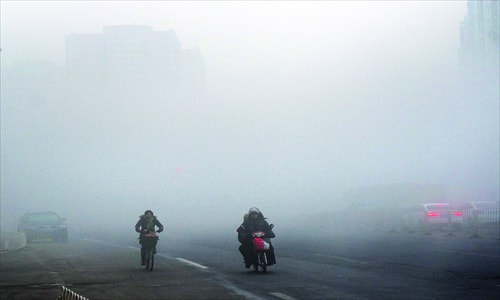Beijing's smog contains deadly toxins
Analysis by the Chinese Academy of Sciences has found that the smog that hit Beijing and northern provinces last month contained large amounts of toxic chemicals. Meanwhile, a new wave of pollution has blanketed the region.
The information was published by China's Global Times. Accordingly, the dense clouds of pollution that fell on the northern cities of this country last January contained many toxic chemicals that appeared in famous smog incidents around the world such as: the giant smog in London in 1952, which was mainly caused by burning coal, causing nearly 12,000 deaths, and the photochemical smog that appeared in Los Angeles, USA in the last century.
 |
| Beijing is facing new levels of pollution. |
There are also many other toxic substances such as chemical dust, a common pollutant in China, and large amounts of nitrogen-containing organic compounds - the main components of photochemical smog, which is produced by the reaction between sunlight and smoke from vehicles and industrial dust, the report by the Chinese Academy of Sciences (CAS) released on February 16 said.
Photochemical smog can lead to heart and lung disease, eye irritation and respiratory problems.
The analysis was released amid warnings of a new wave of pollution that began to sweep over Beijing, Tianjin, and Hubei and Hunan provinces on the morning of February 17, disrupting traffic on highways and flights.
At 8 a.m. on February 18, air quality monitors in five different areas of Shijiazhuang, the capital of Hubei province, showed extremely high levels of pollution. Meanwhile, the Beijing Environmental Monitoring Center said that moderate or severe air pollution was recorded in many areas of the city. Visibility in the early morning here was below 500 meters.
According to CAS, the main cause of the smog is the lack of wind while the amount of suspended dust, polluting emissions and water vapor in the air increases. According to the report of this academy, about 25% of the harmful dust particles smaller than 2.5 micrometers (PM 2.5) originate from vehicle exhaust. Another 40% of PM 2.5 comes from pollutants blown into Beijing from other areas as well as the burning of coal there.
Lü Daren, a scholar at the Institute of Atmospheric Physics under the CAS, asserted that the main cause of pollutant emissions is human activities.
According to Khoahoc.com.vn






